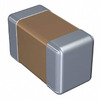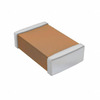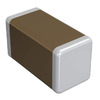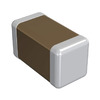[{1 1}]
2024-05-09
21888
In the rapidly developing field of the Internet of Things, the choice of microcontroller determines the success of the project. ESP32 and ESP32-S3 development boards are two representative microcontrollers on the market. They are known for their powerful processing power and diverse network capabilities, designed to meet the needs of different IoT applications. The purpose of this article is to delve into the technical specifications, processor architecture, and performance comparison of these two development boards, as well as their differences and advantages in practical applications. By comparing the key technical characteristics of ESP32 and ESP32-S3 in detail, we can better understand their respective technical advantages and applicable scenarios, and provide a reference for choosing the appropriate development board.
Catalog
Figure 1: ESP32 S3 Development Board
Comparison Between ESP32 S3 and ESP32 Development Boards
ESP32 S3 Development Board
The ESP32 S3 development board uses a high-performance dual-core XTensa LX7 microcontroller running at 240MHz. This high speed enables fast processing and eliminates delays in compiling and loading programs, thereby increasing developer productivity. While using the board, the developers noticed that the program ran smoothly and efficiently from the start.
Figure 2: ESP32 Development Board
The board contains 512 KB of internal SRAM, which is enough to handle complex programs and manage temporary data without the risk of memory overflow. It also offers 2.4 GHz Wi-Fi and Bluetooth 5 (LE) technology and is compatible with 802.11 b/g/n networks, enhancing its ability to seamlessly connect to the internet and other devices. These connections are not only stable but also fast, supporting efficient data transfer and device interoperability.
To meet storage needs, ESP32 S3 supports eight channels of high-speed SPI flash and PSRAM, facilitating fast data processing and suitable for applications requiring high data throughput. Additionally, it has 45 programmable GPIO pins, providing the versatility to connect a variety of sensors and peripherals for both home and industrial use.
SP32 Development Board
Launched in 2016, the ESP32 development board uses the Tensilica Xtensa LX6 microarchitecture and is optimized for IoT applications. It has a dual-core processor capable of multitasking, thereby increasing efficiency. Users benefit from being able to perform tasks such as data collection and network communications simultaneously without affecting the responsiveness of the system.
Figure 3: ESP32 Development Board
The board's support for Bluetooth and Wi-Fi ensures reliable operation in a variety of wireless conditions. This is especially important for IoT devices that need to maintain stable operation over the long term. Users often note that the device maintains a stable connection even in areas with heavy wireless traffic, underscoring its suitability for sustained, long-term use.
Processor Architecture of ESP32 Series
Core Architecture
The ESP32 series features state-of-the-art processor architecture with Tensilica Xtensa LX6 and LX7 microprocessors. These processors can run as dual-core or single-core depending on the needs of the application, allowing developers to customize the system's performance and energy usage. For applications that require powerful computing capabilities, the dual-core option is ideal and can effectively enhance processing capabilities. On the other hand, single-core configurations are better suited for tasks that benefit from greater energy efficiency, providing a balance between performance and power consumption.
Ultra-Low Power (ULP) Coprocessor
ESP32 includes two dedicated ultra-low power (ULP) coprocessors: ULP-RISC-V and ULP-FSM, both designed to reduce energy consumption while performing specialized tasks.
ULP-RISC-V coprocessor: This coprocessor is designed to perform simple, continuous background tasks such as step counting or environmental monitoring. It enables the main processor to enter deep sleep mode, resulting in significant energy savings. For example, during periods of inactivity, ULP-RISC-V can autonomously handle routine monitoring tasks, such as tracking health metrics, which helps reduce the workload on the main processor and improves energy efficiency. It supports the RV32IMC instruction set and is equipped with 32 general-purpose registers, suitable for efficient management of small data operations.
ULP-FSM coprocessor: Unlike ULP-RISC-V, the ULP-FSM coprocessor is tailored for state-based tasks, primarily monitoring and processing real-time sensor data. It uses fixed-state machine logic to use energy more efficiently, making it ideal for applications that require continuous monitoring with minimal power consumption. For example, in smart home systems, ULP-FSM continuously tracks changes in the environment, such as temperature or light levels, without significantly increasing power consumption.
ESP32 and ESP32-S3 Processor Performance Comparison
Processor Core and Architecture
The ESP32 is powered by the Xtensa LX6 processor and can be configured as a dual-core or single-core 32-bit system. Known for its reliability and efficiency, the LX6 excels in standard IoT applications such as environmental monitoring and smart home control, performing these tasks with negligible latency.
Figure 4: ESP32 Development Board
In comparison, the ESP32-S3 features a more advanced dual-core 32-bit LX7 processor that offers enhanced performance capabilities. The LX7 processor is particularly effective in demanding environments that require fast response, such as real-time audio and video processing or interactive gaming. Its exceptional ability to manage complex tasks and simultaneous operations makes it ideal for high-end applications, including advanced image processing and complex data analysis.
Figure 5: ESP32-S3 Development Board
Memory Capacity
The ESP32-S3 has 512 KB of SRAM, which is slightly smaller than the ESP32's 520 KB. Although the differences are small, improvements in the memory management of the ESP32-S3 allow it to match the ESP32 in performance. Users typically experience no noticeable lag, and operation remains smooth even under varying usage conditions.
Performance Testing
The processing power of both processors is measured using the CoreMark benchmark, which evaluates a device's performance under load. Benchmark tests show that the ESP32-S3 performs better than the ESP32 in multi-core settings. This performance improvement is largely due to the LX7's more efficient processing paths and optimized instruction set, which together enhance its ability to handle high-load computing tasks. For example, when developers are working on advanced image processing or executing complex algorithms, the benefits of ESP32-S3 become apparent, allowing for fast processing and significantly reduced task completion times.
Bluetooth Technology of ESP32 Series
Comparison of Bluetooth Technology Versions
The ESP32 and ESP32-S3 demonstrate advancements in Bluetooth technology versions and performance. ESP32 comes with Bluetooth 4.2, providing a powerful platform for low-power Bluetooth connectivity and efficient data transfer. This version is effective for daily tasks and optimized for energy efficiency, suitable for continuously running IoT devices.
In contrast, the ESP32-S3 features Bluetooth 5.0 technology, which offers significant enhancements over its predecessor. Bluetooth 5.0 extends the potential maximum transmission range to 240 meters, four times that of Bluetooth 4.2, and increases data transmission speeds to 2 Mbps. When using the ESP32, users can experience reliable and energy-efficient transmission, ideal for continuous IoT operations. By upgrading to the ESP32-S3, users will benefit from significantly longer transmission distances and faster speeds, maintaining stable communications even in environments with physical barriers or extended range.
Figure 6: ESP32 with Bluetooth
Functional Differences and Application Advantages
ESP32-S3’s Bluetooth 5.0 technology not only expands transmission range and speed but also improves message broadcast capabilities. These enhancements support broader and more complex networks of IoT devices, facilitating more efficient data communications. In real-world scenarios, such as in smart home systems, ESP32-S3 supports more robust device connections, reducing the need for frequent device pairing or reconnection.
Bluetooth 5.0’s capabilities are particularly useful in a variety of IoT applications, from smart homes to health monitoring systems to urban infrastructure management. Its long range and low power consumption allow devices to communicate reliably over longer distances and charge less frequently, ensuring uninterrupted operation. For example, in urban environmental monitoring, the ESP32-S3 reliably transmits data between a wide range of sensors and central systems, promoting consistent, stable environmental supervision.
ESP32 and ESP32-S3 Wi-Fi Function Comparison
ESP32 Wi-Fi Function
Offering 2.4 GHz 802.11 b/g/n Wi-Fi connectivity, the ESP32 excels at managing the wireless networking needs of homes and small offices. This includes activities such as sending emails, surfing the Internet, and simple data exchange. Users generally find it easy and quick to set up and connect their devices to this network. Wi-Fi has wide coverage and high stability, supports simultaneous use of multiple devices without performance degradation, and ensures smooth and uninterrupted online activities.
Figure 7: ESP32 Wi-Fi Function
ESP32-S3 Enhanced Wi-Fi Functionality
ESP32-S3 further supports the advanced HT20/40 Wi-Fi standard, which not only continues to provide 2.4 GHz frequency but also increases the maximum data transfer rate to 150 Mbps. This enhancement makes the ESP32-S3 ideal for more intensive networking needs, such as streaming HD video or handling large file transfers quickly.
The increased bandwidth and speed of the ESP32-S3 become apparent when the network is under heavy use. For example, when streaming HD video or transferring large files, the device can efficiently manage these tasks with minimal buffering. This capability has proven invaluable in smart home environments, where numerous devices such as security cameras, smart TVs, and lighting systems operate simultaneously and require constant real-time connectivity.
Additionally, ESP32-S3’s enhanced Wi-Fi strength ensures reliable connections in larger environments, such as spacious office spaces or industrial applications. It can maintain a stable connection across greater distances and through multiple physical obstacles such as walls. This reliability helps achieve consistent and uninterrupted data transfer over the network in environments where device density is high or devices frequently request network access.
Peripheral and Interface Performance Comparison Between ESP32 and ESP32-S3
Multifunctional Interface of ESP32
ESP32 comes with a variety of interface options, making it highly adaptable to a variety of applications. It has 34 GPIO (General Purpose Input/Output) pins, two UART (Universal Asynchronous Receiver-Transmitter) ports, and two SPI (Serial Peripheral Interface) ports. This configuration is ideal for projects that involve connecting various sensors or devices. In practical use, this enables users to easily manage tasks in complex setups, such as home automation systems or small industrial controls. These interfaces facilitate the integration and smooth operation of multiple components, thereby enhancing functionality across different environments.
For example, when building an environmental monitoring system, the ESP32's GPIO pins can be connected to various sensors (gas detection, temperature, and humidity) simultaneously, while the UART port facilitates real-time data transfer and processing with other control modules or computers.
Figure 8: ESP32 Development Board
ESP32-S3 High-Precision Peripherals
Despite having fewer GPIO pins (26 total) and limited UART and SPI port availability compared to the ESP32, the ESP32-S3 compensates with excellent peripheral enhancements. Notably, it includes a more advanced analog-to-digital converter (ADC) that significantly enhances its performance in applications requiring precise analog signal processing. This is particularly beneficial for tasks such as audio processing or complex environmental monitoring, where the accuracy of signal conversion improves the quality of the output.
For example, in high-quality audio processing projects, the ESP32-S3's sophisticated ADC provides more precise audio signal capture and processing capabilities. This results in a clearer and more detailed sound output than standard equipment. Therefore, ESP32-S3 is ideal for scenarios that require high-precision task execution, such as professional audio systems, precision measurement equipment, or precision scientific research instruments.
Figure 9: ESP32-S3 Development Board
The Core Difference Between ESP32 and ESP32-S3 Development Boards
Advanced Bluetooth Technology and Wi-Fi Performance
Compared with ESP32, ESP32-S3 has significant enhancements in wireless communication, especially the integration of Bluetooth 5.0. This new version of Bluetooth offers a wider communication range and double the data transfer rate compared to the ESP32's Bluetooth 4.2, while also improving the ability to manage multiple simultaneous connections. These features enable ESP32-S3 to efficiently handle multiple device networks, such as in a smart home setup, where it ensures stable and fast connections to various devices such as lights, sensors, and cameras distributed in different locations around the house. Users noticed significant improvements in response times and nearly instantaneous data updates, resulting in a smoother overall system experience.
In terms of Wi-Fi, ESP32-S3 supports the HT20/40 standard, with speeds up to 150 Mbps on the 2.4 GHz band. This feature is critical for applications that require fast data transfer and big data processing, such as streaming high-definition video or efficiently transferring large files.
Peripheral and Interface Enhancements
Although the ESP32-S3 offers fewer GPIO pins than the ESP32, it compensates with advanced peripheral features. A notable upgrade is its analog-to-digital converter (ADC), which now offers greater accuracy and faster data processing speeds. This improvement makes the ESP32-S3 particularly valuable in applications that require precise measurements and fast response times, such as environmental monitoring systems or complex audio processing tasks.
For example, in audio projects, the upgraded ADC of ESP32-S3 can capture and process sound signals with higher fidelity, resulting in clearer and more detailed audio output, thereby enhancing the user's listening experience.
Enhanced Security Features
Security is another area where the ESP32-S3 has significantly improved. It supports digital signatures and uses AES-XTS encryption for flash memory to prevent data tampering and unauthorized access. These security enhancements are critical for applications with strict security requirements, such as payment processing systems or smart home devices that manage sensitive personal data. These security measures ensure that the payment system run by ESP32-S3 is highly secure, effectively preventing unauthorized access and data leakage, thus enhancing the trust and security of users and service providers.
Application Scenarios of ESP32 and ESP32-S3
Application of ESP32
The ESP32 is known for its powerful performance and versatility, especially since it supports dual-band Wi-Fi in the 2.4 GHz and 5 GHz bands. This feature is suitable for applications that require fast and reliable network connections, such as video streaming or managing large data volumes. Although its Bluetooth 4.2 technology is not as advanced as the ESP32-S3’s Bluetooth 5.0, it still meets the requirements of most traditional Bluetooth applications.
Figure 10: ESP32 Development Board
The ESP32's dual-band Wi-Fi is very effective in environments prone to Wi-Fi congestion, or in scenarios where devices require frequent data exchange (such as smart home systems or business automation). Choosing the 5 GHz band is particularly advantageous in these settings because it reduces interference and provides faster data transfer capabilities. For example, in a business environment, utilizing the 5 GHz band can significantly increase data processing speeds and network responsiveness, thereby increasing system efficiency and reliability.
Application of ESP32-S3
In contrast, the ESP32-S3 is tailored for applications that emphasize low power consumption and advanced Bluetooth functionality. Its Wi-Fi capabilities are limited to the 2.4 GHz band, which is sufficient for most needs that don't require the high-speed data throughput of 5 GHz. ESP32-S3's Bluetooth 5.0 technology offers a longer communication range and higher data speeds, making it ideal for consumer electronics, especially smart wearables, and health monitoring devices that benefit from extended range and low power efficiency.
Figure 11: ESP32-S3 Development Board
The low power consumption of ESP32-S3 is an important asset when designing wearable technology, allowing devices to run longer between charges. This is especially valuable for users who rely on constant health monitoring or who prefer minimal device charging. For example, in wearable devices such as smartwatches or fitness trackers, the ESP32-S3 ensures that the device operates throughout the day without worrying about battery life, providing continuous health tracking and data analysis.
Conclusion
ESP32 and ESP32-S3 each have their unique features and advantages, suitable for different technical requirements and application environments. ESP32, with its stable performance and mature technical support, is suitable for complex applications requiring high processing power and dual-band Wi-Fi; while ESP32-S3, with its advanced Bluetooth 5.0 technology and enhanced security features, is more suitable for pursuing low power consumption, new era IoT projects with high data consumption and high data security. Choosing the right development board can not only improve the efficiency of project implementation but also ensure long-term technical support and sustainable development. Therefore, understanding and evaluating the key features of these microcontrollers is an important prerequisite for any technician and business working in the IoT space.
Frequently Asked Questions [FAQ]
1. How many types of ESP32 are there?
The ESP32 series consists of multiple models, each designed based on specific application requirements, such as power consumption, processing capabilities, and I/O ports. The main models include ESP32, ESP32-S2, ESP32-S3, and ESP32-C3. Each model has its unique features, with the ESP32-S2 focusing on lower cost and the ESP32-S3 offering greater image processing capabilities.
2. Is ESP32-S3 supported by Arduino?
Yes, ESP32-S3 supports the Arduino development environment. You can program the ESP32 by installing the board manager in the Arduino IDE. This makes the ESP32-S3 ideal for developers who need to use Arduino software and libraries.
3. Is ESP32-S3 5V tolerant?
The ESP32-S3's GPIO (general purpose input and output) ports do not natively support 5V voltage. They are designed to safely withstand input voltages up to 3.3V only. If you need to connect the ESP32-S3 to a 5V logic-level device, you will need to use a logic-level converter to avoid damaging your device.
4. Which ESP32 is best?
Choosing the "best" ESP32 module depends on your specific needs. For example, if you need high-performance and more I/O ports, ESP32 or ESP32-S3 would be a better choice. If your application requires low power consumption and cost-effectiveness, then the ESP32-S2 or ESP32-C3 may be more suitable. Evaluating your project needs, such as connection type, required memory, computing power, and budget are all important factors in choosing the right model.
 FAATATAU IA TATOU
Tagata faamalieina i taimi uma.Agaalofa ma le talitonuina ma fiafia masani.
FAATATAU IA TATOU
Tagata faamalieina i taimi uma.Agaalofa ma le talitonuina ma fiafia masani.
suʻega suʻega.O oloa aupito pito sili ona maualuga tau ma le tautua sili o lo tatou tautinoga faavavau.
![[{1 1}]](/upfile/blog/small_2024051011243743111.png) [{1 1}]
[{1 1}]
2024-05-10
![[{1 1}]](/upfile/blog/small_2024050911242058621.png) [{1 1}]
[{1 1}]
2024-05-09
VAI VAEGA Numera
 C1608C0G2A472K080AC
C1608C0G2A472K080AC CL31B105KOFNFNE
CL31B105KOFNFNE C2012JB2A102M085AA
C2012JB2A102M085AA GRM31CR61E106KA12L
GRM31CR61E106KA12L GQM1555C2DR80BB01D
GQM1555C2DR80BB01D 12061A330FAT2A
12061A330FAT2A TAP336K016SRW
TAP336K016SRW T495M107M006ZTE1K0
T495M107M006ZTE1K0 30KPA51CA
30KPA51CA FCPF22N60NT
FCPF22N60NT
- AN30180A-PR
- EPM570M100C5N
- EPM2210F256A5N
- LFEC3E-3TN144C
- EPCQ32SI8N
- ATXMEGA64C3-AU
- ACS756KCA-050B-PFF-T
- NLCV32T-R10M-PFR
- OPA4170AIPW
- T491D686K010AT4539
- PCA9554ADB
- LP2987IMMX-3.3
- LTC3728LEUH-1#PBF
- SN65LVDM050PWR
- ADG721BRMZ-REEL7
- TPS61241YFFR
- ADM1070ARTZ-REEL7
- LMZ35003RKGR
- CS497004-CQZ
- ATBM8830
- CY62136CV30LL-55BVIT
- HA17324ARPEL-E-Q
- HYB25L128160AC-7.5
- LCBHP4A-C18
- LT3481IMSE
- MC74HC4066ADR
- PC667074CFGE
- S9S12G96MLF
- SM8707FV-G-E2
- THGBMKG9N4LBAIR
- MIC94070YMTTR
- S3C2450XH-40N
- TNETX3270PGV
- HYE18L256160BC-7.5
- RHCA-501Q43U
- RK73H1JTTD2002F
- SKY77325-15
- L-MUSE-B2B2-NL-DB
- MKE17Z256VLH7